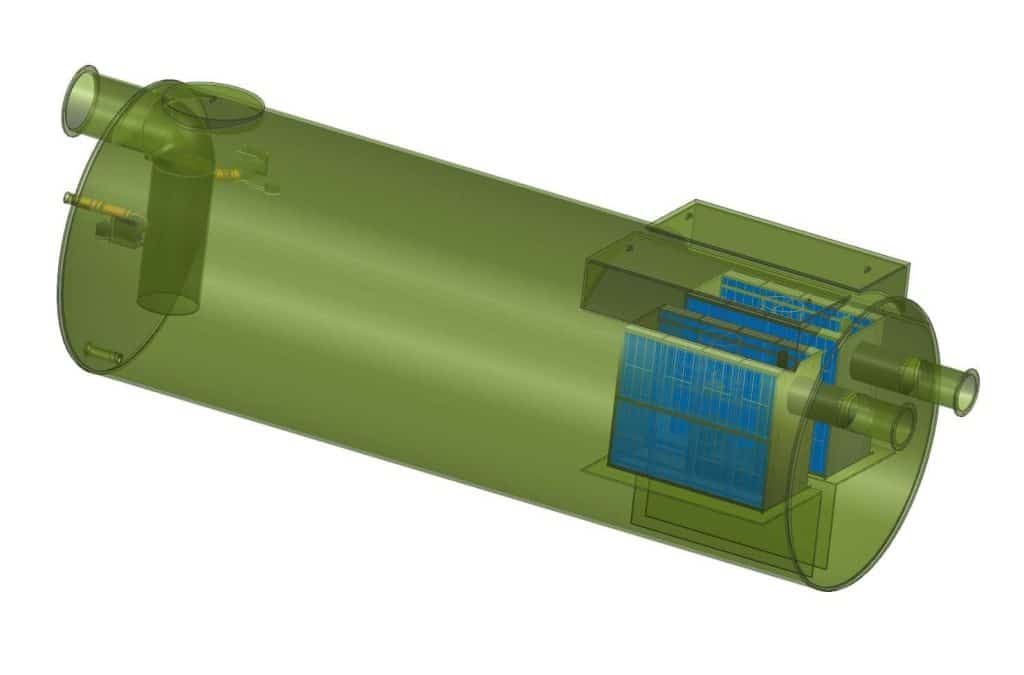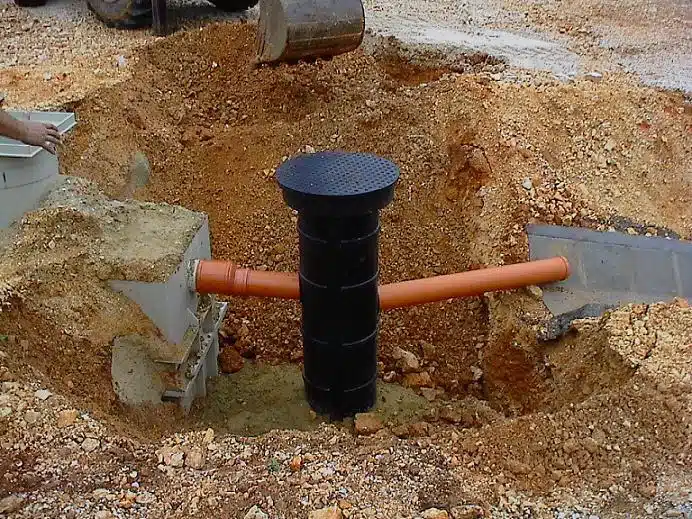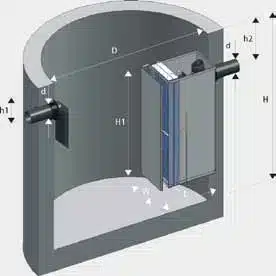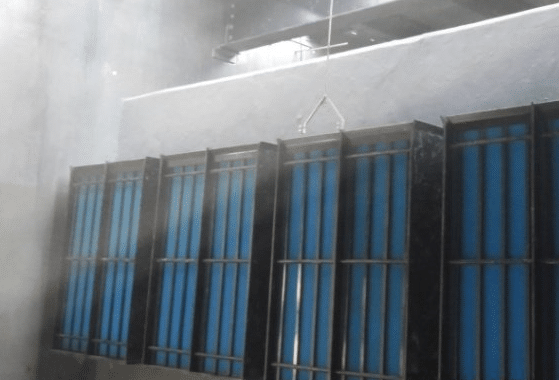Under the busy streets of Washington, DC, a hidden network is key to the city’s health and safety. Ever thought about how the city keeps its waterways clean despite urban runoff? It’s all thanks to the Washington Below Ground OWS systems, a crucial part of DC’s hidden infrastructure.
These systems are vital for protecting the environment and the city’s underground utilities. They keep oil and water apart in wastewater, stopping harmful stuff from getting into our rivers and streams. This makes sure the city follows strict rules about what it can release into the water.
Let’s dive into the world of Washington Below Ground OWS. We’ll see why these systems are so important for keeping the city growing without harming the environment. From the tunnels under our feet to the newest in separation tech, we’ll explore an often-missed part of DC’s setup.
Key Takeaways
- Washington Below Ground OWS systems are essential for protecting DC’s waterways
- Below ground oil water separators prevent environmental contamination
- OWS systems ensure compliance with discharge regulations
- DC’s subterranean infrastructure relies on effective oil-water separation
- Understanding OWS is crucial for maintaining urban-environmental balance
Introduction to Washington Below Ground OWS
Washington DC’s underground tunnels are key to managing its wastewater. At the heart of this system is the Oil Water Separator (OWS). These devices are vital for keeping the city’s water clean and safe.
Definition and Purpose of Oil Water Separators
OWS are big cement vaults hidden underground. They sit between drains and sewer pipes in Washington DC. These vaults use baffles to catch sediments and oils, slowing down the water flow.
This slows down the water, letting oils float and solids settle. This way, the water stays clean.
Importance in DC’s Underground Infrastructure
The OWS systems are crucial to Washington DC’s underground network. They catch oily or dirty wastewater from businesses. This keeps the city’s water treatment plants safe and ensures clean biosolids.
Environmental Protection and Compliance
OWS systems protect the environment in Washington DC. They help businesses follow strict rules, keeping everyone safe. By keeping oil and dirt out of the water, they help maintain the city’s water quality and meet environmental goals.
The History of DC’s Tunnel System and OWS Implementation
The history of DC’s tunnel system is quite interesting. It started in the early 1900s. These tunnels were key to the city’s growth. They were first used for utilities but have changed over time.
In the mid-20th century, people became more aware of environmental issues. This led to the need for better oil water separators (OWS). The tunnels started using these systems to keep Washington’s water clean.
Adding OWS to the tunnels was a step-by-step process. The first ones were simple, but they got better with new technology. Now, the tunnels have top-notch OWS systems that clean pollutants from the water before it goes into the environment.
The story of DC’s tunnel system shows how the city has updated its infrastructure for today’s environmental needs. From basic tunnels to ones with advanced technology, they keep Washington’s water safe.
Types of Below Ground Oil Water Separators in Washington
Washington Below Ground OWS systems have different types for various needs. They are key in handling oil-contaminated water in the city’s underground setup.
Standard Baffle Oil/Water Separators
The basic Below Ground OWS type relies on gravity to separate oil and water. Oil, being lighter, goes to the top, while water falls to the bottom. Baffles in the system catch oil as water moves through.
Coalescing Plate Separators
CPS systems use special plates that draw oil droplets. As water goes through, these plates gather oil, making bigger droplets that float up. This method is more effective than standard baffle separators.
Freytech’s Enhanced Coalescing Technology
Freytech Inc. offers a top-notch Below Ground OWS solution for Washington. Their technology excels in separating various hydrocarbons like motor oil, diesel, and jet fuel. This system is known for its effectiveness against a broad range of contaminants.
Installation Guidelines for Washington Below Ground OWS
Installing Below Ground Oil Water Separators in Washington DC needs careful planning and following local rules. The steps include several tasks to make sure it works right and follows environmental laws.
Approval Process
Before you start, you must get approval from local sewer agencies or the county. You’ll need to send in detailed plans. These should include info about the facility, drawings of the separator, and maps of the site. This process makes sure the Washington Below Ground OWS meet all the needed standards.
Design Specifications
When designing Below Ground Oil Water Separators, think about the capacity. They should handle the maximum discharge flow for 45 minutes. Also, make sure to include a sampling “T” at the outlet to the sewer. This lets you easily check the quality of the discharge.
Site Considerations
Choosing the right site is key for a successful Washington Below Ground OWS installation. You need to think about drainage. Rules say rainwater runoff can’t be more than 200 square feet. This stops the system from getting too full during heavy rain.
A good site map should show where the water comes from and how it drains. This helps make the separator work better.
Maintenance and Inspection of Below Ground OWS
Keeping Washington Below Ground OWS in top shape is key. These systems need regular checks every six months. Experts look for buildup in the chambers during these inspections.
When sludge hits 8 inches in the first chamber, it’s time for a clean. Oil buildup over 2 inches in any part also needs attention. For systems with special plates, cleaning is crucial. Dirty plates can’t work properly.
Good care of Below Ground OWS meets rules on what goes into local waters. It also makes the system last longer. Owners should keep records of all work done. This helps track the system’s health over time.
In Washington, strict rules guide how to manage these systems. Following them keeps our water clean and businesses running smoothly. Regular care stops big problems before they start. It’s a smart move for both the environment and the bottom line.
Environmental Impact and Discharge Limits
Washington Below Ground OWS are vital for protecting the environment. They stop harmful pollutants from getting into water sources. This has a big impact on the local ecosystem.
North American Hydrocarbon Discharge Limits
In North America, there are strict rules for hydrocarbon discharge. The limit is set at 10 parts per million (PPM). This makes sure the water released is clean and safe.
Freytech’s Separation Efficiency Standards
Freytech Inc. sets higher standards. Their Washington Below Ground OWS can separate to 5 PPM. This means the water discharged is much cleaner. Sometimes, they can even get down to 0.1 PPM for trace amounts of emulsified oil.

Contaminants of Concern in Washington DC
Washington DC has its own water pollution issues. It deals with metals, volatile organics, and total petroleum hydrocarbons. BTEX, carcinogenic polycyclic aromatic hydrocarbons (cPAHs), and mercury are also big concerns. Below Ground Oil Water Separators are crucial in tackling these pollutants.
Case Studies: Successful OWS Implementation in DC
Washington Below Ground OWS systems have shown their value in different parts of the city. They effectively manage wastewater and protect the environment. This makes them a key part of the city’s efforts to stay clean.
A big refinery in DC saw a huge success after getting a top-notch Below Ground Oil Water Separator. It cut hydrocarbon discharge by 95%. This was way more than what was required by the law.
A place near the Potomac River had a problem with oil in the water. But, after putting in a custom Washington Below Ground OWS, the issue was fixed. Now, the water quality meets all standards, keeping the river safe for everyone.
An industrial area in southeast DC had groundwater contaminated with oil. They fixed this with a special system as part of their Below Ground Oil Water Separator. This system got rid of hydrocarbons from the groundwater. And, it’s still working well, as checks show.
These examples show how important Below Ground Oil Water Separators are in DC. They keep the water clean and support the city’s green growth plans.
Conclusion
Washington Below Ground OWS systems are key to protecting DC’s underground and the environment. They work hard to keep the city’s underground safe and clean. With everything from simple baffle designs to advanced coalescing technology, these systems help DC meet strict water quality standards.
Below Ground Oil Water Separators in Washington are very important. They play a big role in protecting the environment. By removing oil and other pollutants from water, they keep DC’s waterways and underground safe.
For these systems to work well, they need the right setup and regular care. Keeping them in good shape means they can keep doing their job. This is crucial for protecting the environment in our capital as it grows and changes. These systems are a vital part of DC’s infrastructure.
These separators are crucial in storm water systems. They process runoff to meet the US EPA’s Clean Water Act standards. With effective oily water treatment, facilities protect the environment and dodge big fines.









